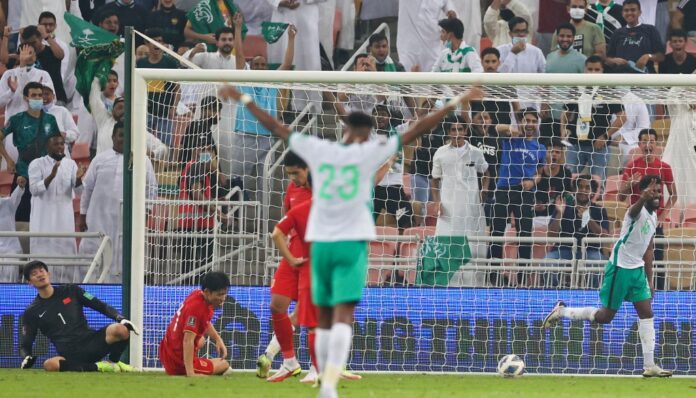RIYADH: Unless you have been living under a rock, you would be well aware by now of the takeover of English Premier League side Newcastle United by Saudi Arabia’s Public Investment Fund. It has dominated front- and back-page headlines, and continues to do so, the world over.
And if you only consumed media from western Europe, you would be forgiven for thinking football in Saudi Arabia started and ended with the takeover or assisting FIFA in its push for a biennial FIFA World Cup.
But for those who prefer to glance east rather than west, these are very interesting times in Saudi football, but for entirely different reasons than a foreign takeover.
The Kingdom, and its horde of passionate and vocal fans, have always thought of themselves as a giant of Asian football and in the 1980s and 1990s that was most definitely the case, making the final of the AFC Asian Cup five tournaments in a row from 1984 to 2000 (winning three), while also qualifying for the FIFA World Cup for four successive tournaments from 1994 to 2006.
They also became only the second Asian nation after North Korea (1966) to make it to the knockout rounds when they advanced to the Round of 16 in 1994, before losing to Sweden.
The Kingdom were Kings of Asia, and it was a position that sat comfortably with them. But for the best part of the last two decades, Kings of Asia they have not been. Group stage exits in three of the last five Asian Cups and missing qualification for the 2010 and 2014 FIFA World Cups. In fact, in qualifying for Brazil 2014 they did not even make the final round.
It was a sudden and harsh fall from grace for the Green Falcons.
But the tide has since turned.
Under the stewardship of Frenchman Herve Renard, Saudi Arabia are the last remaining team with a 100 percent winning record in the final round of Asian qualifiers for Qatar 2022, taking all three points against Vietnam, Oman, Japan, and China.
Not even halfway through qualifying, and with just over 12 months until the global showpiece in neighboring Qatar, the Saudis already have one foot on the plane.
And what will please Renard is the manner in which they are doing it. The swagger is back. The verve with which they are playing, especially in the first half against China when they arguably should have put the game to bed, has been a sight to behold.
The most pleasing aspect, especially for Renard, will be the names that are finding the back of the net.
It is not the usual suspects such as Salem Al-Dossari, Fahad Al-Muwallad, or Salman Al-Faraj, the experienced trio who combined for more than half of Saudi Arabia’s 22 goals in the second round of qualifying.
Instead, it has been names such as the inexperienced trio of Saleh Al-Shehri, Firas Al-Buraikan, and Sami Al-Najei – all with less than 15 caps – that are standing up when it counts, scoring six of eight goals in this final phase.
While tougher tests await, especially as they are required to travel east to Japan, Australia, and Vietnam, for the moment things could not have gone any better.
At domestic level the fortunes of the national team are being matched on the continent by their club sides, with two Saudi clubs making it to the semi-finals of the AFC Champions League for the first time since 2012.
Such is the pedigree of Saudi clubs in this competition that at least one has made the semi-final in seven of the past 10 editions, although only Al-Hilal in 2019 went on to win the tournament.
It is not just on the park where Saudi teams are delivering, the scenes off it have been some of the most magical in Asian football.
The sight of thousands of streamers raining down onto the ground ahead of Al-Nassr’s quarter-final against the UAE’s Al-Wahda, which forced kick off to be delayed by 10 minutes, was one to behold and was a perfect illustration of the deep football culture that exists within the country.
As we now look ahead to Tuesday night’s semi-final and the highly anticipated Riyadh derby between Al-Nassr and Al-Hilal, we do so with huge anticipation of what is to come.
Mrsool Park in Riyadh may be small and intimate, but every corner and crevice of it will be shaking to its core as Al-Nassr and Al-Hilal fans make an atmosphere that would not be out of place anywhere in the world.
While the rest of the world may be looking to St. James’ Park for their understanding of Saudi football, they really should put their focus on Mrsool Park this week. If they did, they would see the true state of Saudi football – and it is in fabulous health.

